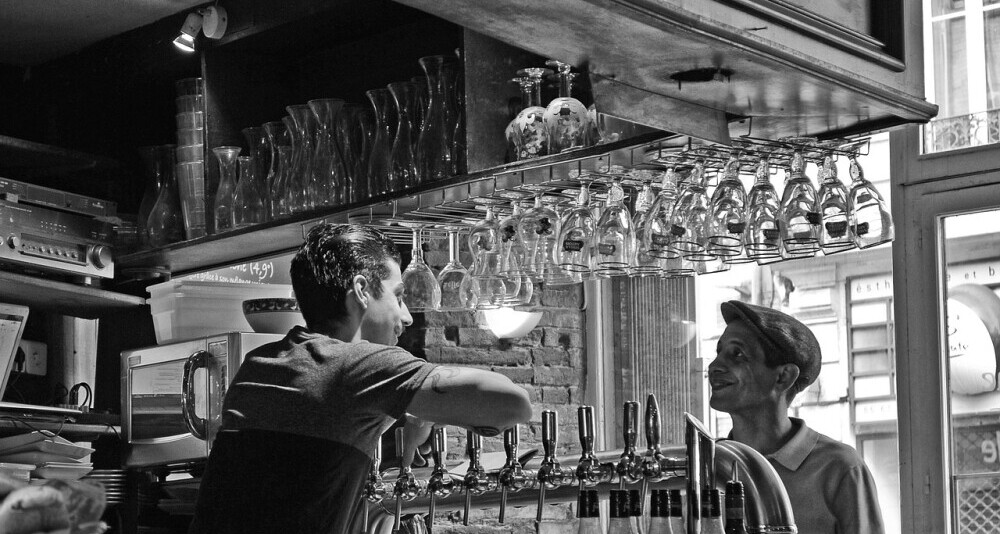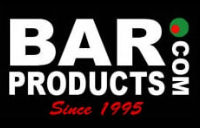Master Bartenders lingo to boost your bar confidence. Join us for tips and tricks at Shake, Sip, Serve. Drink responsibly!
Welcome to Shake, Sip, Serve, your one-stop shop for all things bartending.
I’m your host, KAD, and I’ve been slinging drinks and navigating the world of hospitality for over two decades.
The past 15 years, I’ve perfected my bartending skills, experimented with countless flavor combinations, and learning a thing or two about how to keep the party going behind the bar.
Whether you’re a seasoned bartender like me just looking for some fresh inspiration or a complete beginner who is eager to whip up impressive cocktails at home, Shake, Sip, Serve is here to be your guide.
In the below blog, I’ll be sharing my knowledge and experience on everything from classic cocktails and innovative new creations to essential bartending techniques and industry secrets. I’ll also be offering tips on stocking your home bar, mastering the art of presentation, and creating a memorable experience for your guests.
So, grab your shaker, dust off your favorite glassware, and get ready to embark on a delicious journey into the world of bartending!
Let’s Shake, Sip, and Serve up something amazing together.
Disclaimer: This post contains affiliate links. If you purchase through these links, I may earn a small commission at no additional cost to you. 
Speak Like a Pro: Mastering bartenders lingo
Bartending has its own unique language, and mastering it can make all the difference in your shift. Imagine you’re swamped with orders, and you need to quickly grab a “Dirty Martini.” Knowing that it means adding olive brine to the usual concoction speeds things up.
Let’s talk about being “behind the stick”—that’s just the cool way of saying you’re working behind the bar. It’s your home base for preparing drinks, and understanding the terms tossed around here is key to keeping things smooth. When someone requests their drink “neat,” they’re asking for it straight from the bottle. Simple, right? But not knowing this can lead to awkward hiccups.
Some terms help with efficiency, like “86,” which tells everyone an item is off the menu—maybe you’re out, or it’s discontinued. Hearing “86” saves time, so you’re not scouring shelves during the Friday night rush.
Then there’s “on the rocks.” This isn’t a fancy drink; it just means served over ice. Knowing these terms streamlines the ordering process, allowing you to be quick and precise.
Being a bartender means sometimes juggling complex orders. Someone might order a “call drink”—that’s their way of specifying exactly which brand of liquor they want in their cocktail. Not to be confused with “perfect,” reserved for a Manhattan with equal parts sweet and dry vermouth, revealing the customer’s more refined tastes.
So, these terms are not just about sounding like a pro; they’re tools to connect with customers and create the exact experience they want. Being aware of what each term entails provides clarity, bolsters your confidence, and elevates your service every night you’re behind that bar.
Bar Operations and Equipment Essentials

Knowing your way around the tools of the trade isn’t just handy—it’s essential for keeping the bar running smoothly. Kick things off with the “back bar,” the area where everything you need is stored, from bottles to glassware. It’s your supply hub, so understanding it minimizes chaos, especially during hectic shifts.
Ever heard of a “bus tub”? It’s the unsung hero for collecting all those dirty glasses without losing a step. Organization here can be vital, so make sure it’s within easy reach to keep things tidy and efficient. A cluttered bar means more work later and less time tending to orders and customers.
Don’t overlook the “service well”—that’s where servers grab the drinks you’ve mixed. It’s prime real estate, and keeping it organized speeds up the whole team’s pace. A little attention here goes a long way in turning tables quickly.
Let’s not forget about the “garnish tray,” the holder of all your olives, citrus wedges, and cherries. Having this well-stocked and laid out correctly keeps you from scrambling mid-drink. It’s the little things like these garnishes that often make a drink pop, both visually and flavor-wise, boosting customer satisfaction.
You’ll also come across the “shaker tin” or “mixing tin,” part of the iconic Boston shaker. These aren’t just fancy tools; they’re essential for cocktail crafting, allowing you to mix drinks with flair. Knowing the balance between shaking and stirring makes a huge difference in presentation and taste. You can learn more about that in my blog post “[Link to your previous blog post about shaking vs. stirring].”
Understanding your environment and equipment makes you more efficient and confident. When you know where everything is and its purpose, you project authority, ensuring your boss and customers know you’re the bartender who has it all under control.
Navigating Customer Interactions with Finesse

Working a bar means you’re not just mixing drinks; you’re crafting an experience, one interaction at a time. It’s all about understanding your customers and making their time at your bar memorable.
One term you’ll hear is “campers,” those folks who grab a seat and hang around for ages without ordering much. While they can take up space, dealing with them politely but firmly is the way to keep the bar’s energy flowing. You want to maintain that friendly vibe without losing potential sales.
Ever been “in the weeds” and hear “on the fly”? That’s the cue to hustle something out quickly, like when a customer decides last minute they need a Mojito with their meal. It’s a call to prioritize and make it happen smoothly, showing everyone you’re cool under pressure.
Communication isn’t just about knowing the lingo; it’s about using it to keep things clear and error-proof. A heads-up like “I’m going on the fly with this one” tells everyone you need things moved up the list, reducing mix-ups and improving service speed.
Customer interactions are your chance to shine, so use the right language and cues to keep things professional yet personable. A genuine smile, a dash of lingo, and a little extra attention can turn a first-timer into a regular, making that bar stool an extension of their living room.
Knowing how to handle different personalities eases the flow of your shift and ensures each guest leaves happy. Happy customers talk, return, and tip, contributing to the buzz that makes your bar the place to be.
The Importance of Knowing the Bartenders lingo
Mastering bartending lingo isn’t about showing off; it’s about enhancing every part of your shift. When you’re fluent in the language of the bar, communication flows effortlessly, orders are precise, and confusion becomes a rare encounter.
Imagine this: a bustling night, the music’s pumping, patrons are chatting away, and a server shouts out an order—”86 the Chardonnay!” Without hesitation, you know it’s out of stock and can find alternatives. Quick recognition and response can keep the wheels turning smoothly.
Efficiency’s your best friend, and knowing the right terms keeps you a step ahead. It cuts down on back-and-forths and lets you focus on what you do best—crafting drinks and creating experiences. Plus, less confusion means fewer mistakes, making your shifts less stressful and way more rewarding.
There’s a professionalism that comes with fluency in bar jargon. It tells everyone, from colleagues to customers, that you know your craft. You’re not just there to serve; you’re managing an environment, ensuring every visitor is met with competence and a dash of charisma.
Confidence skyrockets when you’re comfortable with the terms. Instead of second-guessing, you move with assurance, and that’s something customers notice. Command over language reflects in the way you interact, mix, and manage the bustle behind the stick. It’s about owning your space and exuding a trust-worthy presence.
In a nutshell, knowing your lingo isn’t just beneficial—it’s transformative. It uplifts your service, boosts your confidence, and molds you into the bartender everyone relies on.
Practical Application of Bartending Language
To really nail the bartending game, you’ve got to live and breathe the lingo. It’s not just about memorizing terms but incorporating them into your everyday tasks like they’re second nature.
Start small. Pick a few words each shift and focus on using them correctly. Notice how they flow in conversations with colleagues and customers. It’s like learning a new dance move—practice until it’s effortless.
Engage in activities to reinforce these terms. Create flashcards or tag-team with a fellow bartender to quiz each other during downtime. It’s a fun way to keep each other sharp without breaking the flow of a shift.
Role-playing is underrated. Team up for mock runs of different scenarios that require specific terms. It’s a hands-on way to build confidence and speed, preparing you for real situations.
Apps and online resources can also be great. Use them to understand contexts better and find the ones suitable for varied situations. They offer a deeper dive into the language aspects you need most.
Don’t shy away from asking seasoned colleagues for tips. They’ve been in your shoes, feeling like a newbie trained in a whole new language. Their insights can offer shortcuts and simplify complex ideas.
Remember, each practice brings you closer to fluidity. As with crafting the perfect cocktail, consistent practice with the language refines your skills and polishes your performance behind the bar.
Elevating Your Professional Image with Language
Language is a powerful tool, and in bartending, wielding it effectively boosts your professional image substantially. It’s like wearing your best leather jacket—it just feels right and projects confidence.
Knowing the right terms shows you’re serious about your job. It distinguishes you from the casual who might be just passing through. Your adeptness signals that you’ve put in the time to learn the ropes, solidifying your reputation among peers and patrons.
When you seamlessly integrate the right lingo into your shifts, you exhibit authority. It’s not just about doing your job—it’s about doing it with flair and assurance. Customers and coworkers alike trust a bartender who speaks the language, and that trust leads to repeat business and better tips.
Harnessing the language isn’t just good for your current post. It sets the foundation for career growth. Whether you aspire to manage a team or open your own place, clear communication and a polished image are assets that push you forward.
Insights from seasoned bartenders reveal that speaking the lingo was pivotal in their upward mobility. It wasn’t just about proficiency; it was the confidence that came with fluency that propelled them to leadership roles.
To elevate your image further, stay curious and updated with evolving trends in the trade. Language, like fashion, changes. Keeping up not only maintains your edge but endears you to a broader clientele and network.
So, don’t just blend in. Stand out by letting your words and understanding do the talking, making every shift an opportunity to reinforce your professional presence.
Connecting Through Shared Language
At a bar, language isn’t just a tool—it’s a bridge to build connections and foster a sense of belonging. When you use the right bartending terms, you’re not only communicating more clearly but also inviting everyone into a shared experience.
Think of it like joining a unique club where everyone speaks the same lingo. As you master the words and phrases, it becomes second nature to engage with customers and coworkers alike, cultivating an inviting atmosphere. It’s this shared language that bonds bartenders, transforming colleagues into friends and patrons into regulars.
Learning and using bartending jargon shows respect for the tradition and craft of bartending. You’re honoring the legacy of those who’ve poured countless hours into perfecting the art. It’s a signal that you’re committed and proud to be part of this vibrant community.
Building rapport with customers through language also ups your connection game. Customers enjoy when bartenders explain what ‘on the fly’ means or why a ‘perfect’ Manhattan balances flavors so well. It turns interactions into stories, enriching their experience.
Cultivating these connections doesn’t happen overnight. It involves consistent effort, a willingness to learn, and a genuine interest in people and service. Over time, this approach not only enriches your nights behind the bar but also ties you into the wider network of bar professionals.
So, keep chatting and sharing insights. Use those terms to create a sense of unity and transform every interaction into a connected moment, ensuring that everyone leaves feeling a little more at home in your bar.
Command the Bar with Confidence
Mastering bartending lingo positions you as more than just someone who serves drinks; it casts you as a confident professional in the vibrant world of bartending. With the language down, you’re not only efficient in your service but also a key element in the bar’s lively atmosphere.
Embracing this aspect of bartending is about more than just the technical side. It’s personal—each term you learn and every order you handle with precision boosts your confidence, encouraging you to take ownership of your role. The confidence radiates, enhancing both the customer’s experience and your personal satisfaction.
Your journey from stepping behind the bar for the first time to commanding it with assurance is marked by your growing ease with the language. This transformation is rewarding personally and career-wise, bringing with it opportunities to stand out, excel, and even mentor others.
Confidence also means knowing when to adapt and when to stick to the classics. Being able to make recommendations and explain them clearly turns you into a reliable guide for customers exploring new flavors, enhancing their trust in you and the bar.
As you continue to grow in this role, remember that bartending is an evolving art. Stay curious, continue learning, and adapt the traditional with the contemporary to keep your skills sharp and relevant.
Ultimately, the goal is to make every patron feel they’re in capable hands, crafting not just drinks but memorable experiences. Embrace the Bartenders lingo language, challenge yourself to grow, and let your confidence be the signature ingredient in all you do behind the bar.
Thanks for joining us behind the bar!
The bartending community is a vibrant and supportive one, and I’m excited to build that community here on Shake, Sip, Serve. I’d love to hear your thoughts, questions, and experiences in the comments below. What are you shaking up these days? What topics would you like to see covered in future posts? Let’s connect and continue the conversation!

Read more:
Shaking Vs. Stirring: When And Why It Matters
Alcohol 101: A Beginner’s Guide To Spirits, Liqueurs, And Mixers
The Art Of Mixing: Essential Techniques For New Bartenders
The Science Behind Cocktails: How Ingredients Work Together
Building Your Flavor Palate: Tips For Crafting Signature Drinks
Top 10 Classic Cocktails Every Bartender Should Master
Understanding Glassware: Finding The Right Fit For Every Cocktail
Bartenders Lingo Decoded: Command The Bar With Confidence
Home Bar Essentials: Must-Have Tools For Every Beginner Bartender
Syrups, Bitters, And More: Adding The Perfect Finishing Touch To Your Drink

Kristy, your post is a treasure trove of insight for anyone looking to navigate the vibrant world of bartending with confidence. I love how you break down bartending lingo into digestible, practical pieces, making it approachable for both seasoned pros and aspiring novices. From explaining the nuances of a “Dirty Martini” to demystifying terms like “neat” or “86,” you’ve highlighted how mastering this language isn’t just a technical necessity—it’s the key to smoother shifts, stronger customer connections, and elevated service.
Your emphasis on the professional growth that comes from knowing the lingo is particularly inspiring. It’s clear that this isn’t just about mixing drinks but about fostering an environment of trust and expertise behind the bar. I also appreciate the tips on practical application, like incorporating new terms into daily tasks and using flashcards or role-playing scenarios to build confidence.
Hey there! Thanks so much, I’m really glad you found it helpful. It’s true, bartending lingo can seem like a whole other language sometimes! I’m all about making it easier for everyone to learn and feel confident behind the bar.